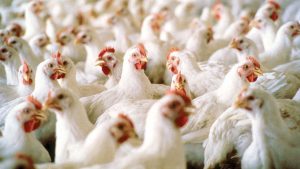THE GOVERNMENT is seeking an improved system that will encourage early reporting from poultry farms of Avian Influenza (AI) outbreaks, while also helping it monitor poultry prices.
“The current Life Cycle Model on both layer and broiler chicken may not be reflective of actual situation as there have been some ‘interventions’ made by importer-producers of breeder stock due to Avian Influenza,” Bureau of Animal Industry (BAI) Director Reildrin G. Morales said in a statement.
“Other factors that have resulted in a disparity in supply and demand are the rising cost of inputs such as feed ingredients and fuel, the changing weather conditions and nutritional formulation adjustments by companies that led to stunted growth and prolonged growing periods,” he added.
According to United Broilers Raisers Association President Elias Jose M. Inciong, the government should shorten indemnify farmers with affected birds faster.
“The BAI should consider streamlining the indemnification process to enable the affected growers to immediately resume production and recover,” he said.
He also recommended that the Local Price Monitoring Council be restored in order to monitor prices of commodities.
The Departments of Agriculture (DA) and Interior and Local Government were also encouraged to harmonize and unify policy on movement guidelines for live birds, poultry products and by-products during the AI outbreak.
“It would be best if DA can come up with clear policies on proposed tariffs on meat, to firm up the confidence of farmers and producers,” Mr. Inciong added.
Based on this year’s food supply outlook, the total supply of poultry will hit 580,415 metric tons (MT) in the third quarter and 610,696 MT in the fourth quarter, with demand projected at 405,017 MT and 435,100 MT respectively, according to the DA.
“Poultry self-sufficiency ratio will remain at 92% by the end of the year, with ending stock of 175,596 MT, good for 39 days,” Mr. Morales said. — Luisa Maria Jacinta C. Jocson
